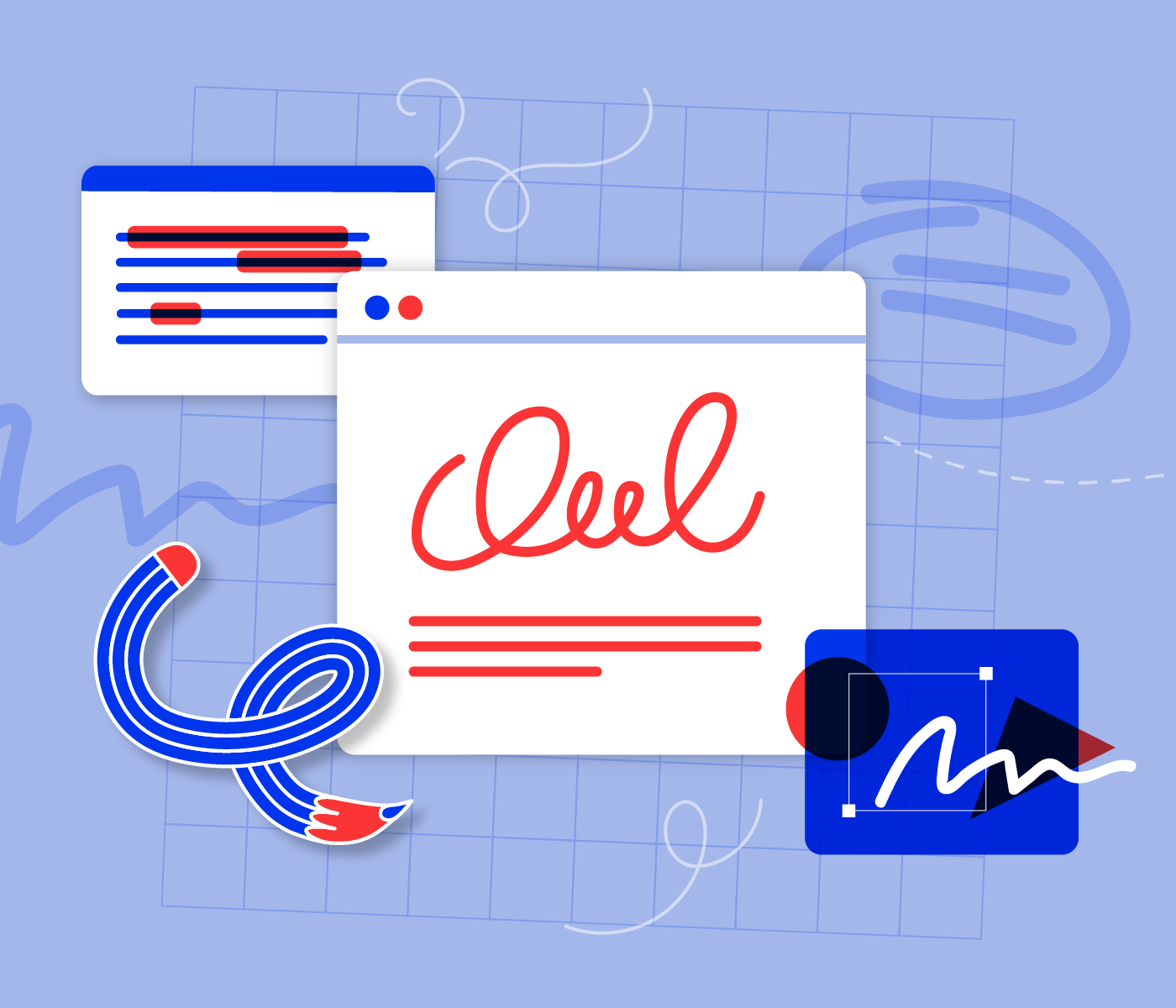Creative Copywriting is a series exploring the principles and processes behind great copywriting. Using successful businesses and marketing campaigns as case studies, each article attempts to uncover the unique approaches that turn average campaigns into transformative ones.
Why copywriting?
As digital marketers, we can be accused of being too focused on statistics. Instead of caring about what goes inside the box, we tend to focus on everything else — performance trends, keywords, audiences, impressions, conversion rates, clicks, placements, return on ad spend, the list goes on. Somewhere along the way, perhaps encouraged by the seemingly limitless streams of data we have at our fingertips, we lost sight of the fact that one of the most fundamental parts of our work is communicating with other people. Not triggering hidden parts of their psychology, not persuading them to buy products, not following best practices — just communicating.
Now, more than ever, with the majority of websites on the internet completely saturated with advertising, people are acutely aware of — and resistant to — personalised ads, persuasive marketing tactics, psychological hacks, and even advertising more generally. This is where good writing can start to make a difference. In an ocean of advertisers trying to persuade, convince, and manipulate, a simple, understated value proposition can work wonders.
Good messaging can be the difference between alienating a customer and making the first positive impression in a lifelong relationship. Coupled with a product that provides real value, good messaging encourages repeat customers, product advocacy, social sharing, receptiveness to new features/products, and positive brand recognition.
With digital marketing so focused on the statistical side of the equation, there's a competitive advantage to be gained with considerate, contextually-aware messaging. The type of messaging that takes the person on the other side of the screen into account, that communicates clearly, that offers meaningful value, that frames rather than persuades, that gives people the space to make their own choice.
In the first article of the series, we're going to look at some successful technology companies and learn how they use non-invasive, benefit-centric messaging to frame products in a positive light. Whether it's a particular linguistic device, sentence structure, or approach to framing the discussion, we'll break everything down with clear examples and distill any key takeaways that might be useful for the future.
Case studies
For the purposes of this article, we're going to be looking at the following companies: Loom, Intercom, Dropbox, Pitch, and Apple. Though different companies — and at different stages of development — their approaches to messaging share a number of common threads:
- Soft, benefit-centric framing
- Smooth, flowing sentence structure
- Use of rhetorical devices (tricolon, alliteration, etc.)
- Ambiguous/expressive language (words and phrases that can be interpreted in a number of different ways)
Each of these threads combine to create brand voices that resonate with buyers, positioning their products as smart, beautiful, and functional additions to people's lives. Good messaging can help put any outstanding concerns to rest:
- Does this company care about their customers?
- Can I contact them if something goes wrong?
- Is this the best product available on the market?
Whilst also encouraging customers to feel secure and reassured about their new purchase.
Benefit-centric framing
To get things started, we're going to focus on benefit-centric framing. In simple terms, this means foregrounding the benefits that our product or service provides for the customer. In the case of Apple and a product like the iPad, it's not the screen that's important, but what the customer can do with it. Whether Apple shows people watching their favourite films in high definition, seeing their loved ones on FaceTime, or sharing high-resolution digital photos with friends — everything is oriented towards benefits the customer can experience in their day-to-day life.
Whether marketing a new app for digital professionals, products for a multinational insurance company, or a local family-run restaurant, try to communicate the core benefits of a product/service in a few short sentences. Rather than focusing on features — how many pixels on the screen, how many gigabytes of storage — frame things from the perspective of the customer. Store 10,000 photos in your pocket. Watch your favourite movies in crystal clear high definition. Share videos with your friends in a heartbeat.
It might seem simple, but to write copy that resonates with potential customers, we have to talk to existing customers, understand their thought processes, their problems, their motivations, what drives them to choose a specific product over another. Whether that means conducting customer interviews, creating surveys, or reading reviews, we have to talk to real people, understand the things they care about, learn their language, and communicate in their terms.
There are, however, some caveats to this approach. When your product or service is designed for professionals with very specific requirements, features implicitly become the benefit of the product, leaving more room for technical language and a feature-centric approach.
Flowing sentence structure
The next two sections focus on something more ephemeral and difficult to pin down. Sentences that roll off the tongue, that feel easy and pleasurable to read, that seem natural and effortless, that communicate eloquently, that satisfy our desire for familiar and comfortable patterns.
This can be as simple as using the rule of three to structure sentences, or mirroring common conversational patterns. In the cases of Intercom and Pitch, they write in a casual, conversational form, often breaking sentences up into clauses that match natural speaking rhythms:
To generate compelling and engaging sentence structures, we have to embrace the somewhat difficult process of writing and rewriting a particular sentence until something just feels right. Whether that means reading and adjusting a sentence over and over until something clicks, writing a few different versions of a given sentence and comparing, or reading the sentence to a colleague, everything should be geared towards creating something that feels right.
Rhetorical devices
With “good” sentence structures being so difficult to pin down and recreate reliably, rhetorical devices can provide some useful heuristics for generating interesting copy. Take a look at this list of rhetorical devices, for example. From alliteration to synaesthesia and beyond, there are dozens of rhetorical forms to help us write more compelling copy.
In the case of companies like Apple and Loom, the tricolon is often used as a device for bringing together seemingly disparate concepts and making them feel harmonious:
No matter the product, service, or company, when used in the right context, the tricolon can tread the line between expressiveness and ambiguity, giving the reader enough space to make their own connections, while still shaping the conversation in a positive way.
Alliteration also plays a huge part in writing compelling copy. Take some of the examples from Apple and Loom, “Snap a photo. Scan a doc. Shoot a film.” and “A more efficient, expressive, effective way to communicate”. Alliteration gives these headlines a sense of rhythm, the repeated sounds feel good, everything just seems to fall into place. As a reader, sentences like these play on our desire for familiar patterns. While we don't consciously acknowledge the use of alliteration while reading, we derive pleasure from it being there.
In this sense, it's best to use rhetorical devices sparingly, the goal is to feel natural, rather than overbearing. As with sentence structure, everything should be geared towards creating something that feels good, rather than a perfectly persuasive message designed to convince the reader.
Expressive language
This leads us on to the use of expressive and occasionally ambiguous language. In a similar way to the tricolon tying disparate concepts together and giving the reader space to interpret things on their own terms, ambiguous language allows for different interpretations of the same content. By being intentionally ambiguous, we can cut-across different demographics, communicate with many different kinds of readers, and create something that works for everyone.
In the case of the top-left example, the word “air” sets the tone, conjuring notions of freshness, lightness, speed. The rest is left to the reader, to make associations, to put the pieces of the puzzle together. Of course, using ambiguous language is much easier for a large company like Apple, with near-universal brand recognition and widespread public familiarity with their products. Most potential customers are likely aware of the iPad Air before having seen any marketing, so Apple can embrace ambiguity precisely because people know their products.
In the case of smaller businesses with less brand capital, ambiguity can be used in a softer way, to ask questions of the reader, while making sure to answer any more critical questions — What is this product? What does it do? How much does it cost? Why should I choose it over others?
In the case of Opteo, our tagline “The smarter way to manage Google Ads” gives a clear indication of what our product does — help people manage Google Ads — while also leaving enough ambiguity as to raise questions. What does smarter mean? How is it smarter? What can it do?
These are the sorts of questions we want readers to ask. Rather than leaving them in a place of uncertainty around our product, we can frame conversations and encourage positive questions that lead to positive outcomes.
Key takeaways
In a broad sense, writing is a difficult process. It's almost impossible to make hard-and-fast rules that apply in every scenario. While there are no certain answers, we can start to pay attention to the role good writing plays in successful marketing campaigns and continuously develop, test, and evaluate new ideas as they filter through.
In the spirit of keeping things simple, the following points should prove helpful when writing your next campaign:
- Everything starts with your customers. Whether benefit-centric framing, or rhetorical devices that resonate, an understanding of your customer base is essential. Read product reviews, conduct customer interviews, talk to your customer service team, do whatever you can to understand your customers and what motivates them.
- Benefit-centric framing. Positively frame things from the perspective of your customer. Following the point above, when you know what your customers want, it's generally much easier to frame things in a way that resonates.
- Flowing sentence structure. Don't be afraid to write and rewrite a passage until something clicks. Try writing in a conversational register, try auto-writing without thinking too much, try reading sentences out loud. Follow your intuition, if something feels right, trust your judgement.
- Rhetorical devices. Run through this list of rhetorical devices and see if any of them are appropriate for your situation. Remember to use them sparingly, the goal is to create something that feels good, rather than a perfectly persuasive message to convince the reader.
- Expressive language. As long as the basics are taken care of, expressive/ambiguous language can give the reader more room to interpret things on their own terms.
If you have any questions, copywriting tips, or an industry to recommend for the next article in the series, head over to our Facebook, Twitter or LinkedIn and leave a comment!


